Critical Thinking & Continuous Improvement Knowledge Questions Task
VerifiedAdded on 2023/06/08
|6
|1035
|85
Homework Assignment
AI Summary
This assignment consists of knowledge-based questions centered around critical thinking and continuous improvement. It begins by defining the characteristics and essential skills of a critical thinker, along with real-world examples of its application in the workplace and the benefits it brings, also highlighting the potential consequences of neglecting critical thinking. Furthermore, the assignment defines continuous improvement and compares three distinct methodologies: Lean, Six Sigma, and Total Quality Management (TQM), emphasizing their unique approaches to process optimization. It concludes by identifying reliable information sources relevant to workplace processes, such as documentation and databases. This assignment provides a foundational understanding of critical thinking and continuous improvement, crucial for professional development and effective problem-solving. Desklib provides a platform to access more solved assignments and resources for students.
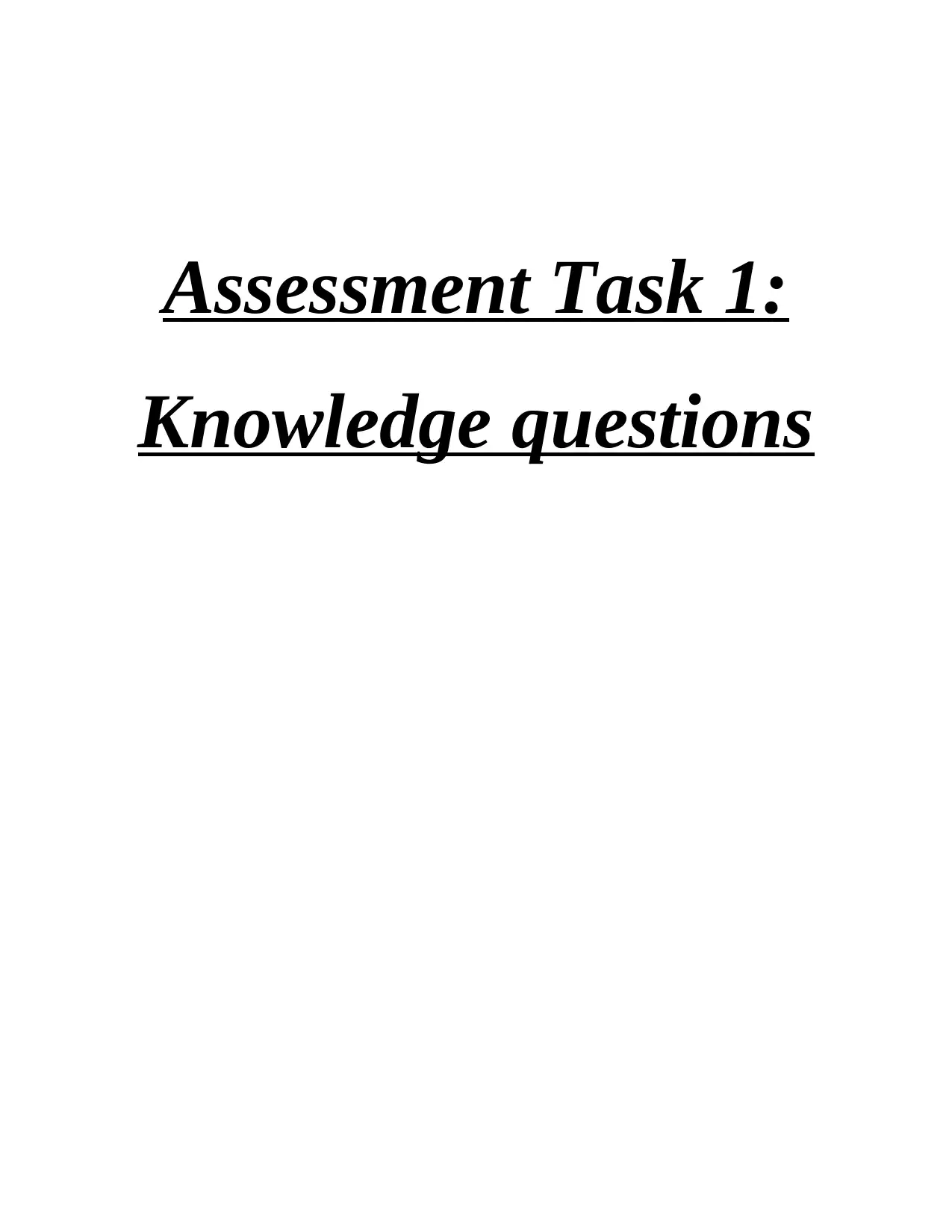
Assessment Task 1:
Knowledge questions
Knowledge questions
Paraphrase This Document
Need a fresh take? Get an instant paraphrase of this document with our AI Paraphraser
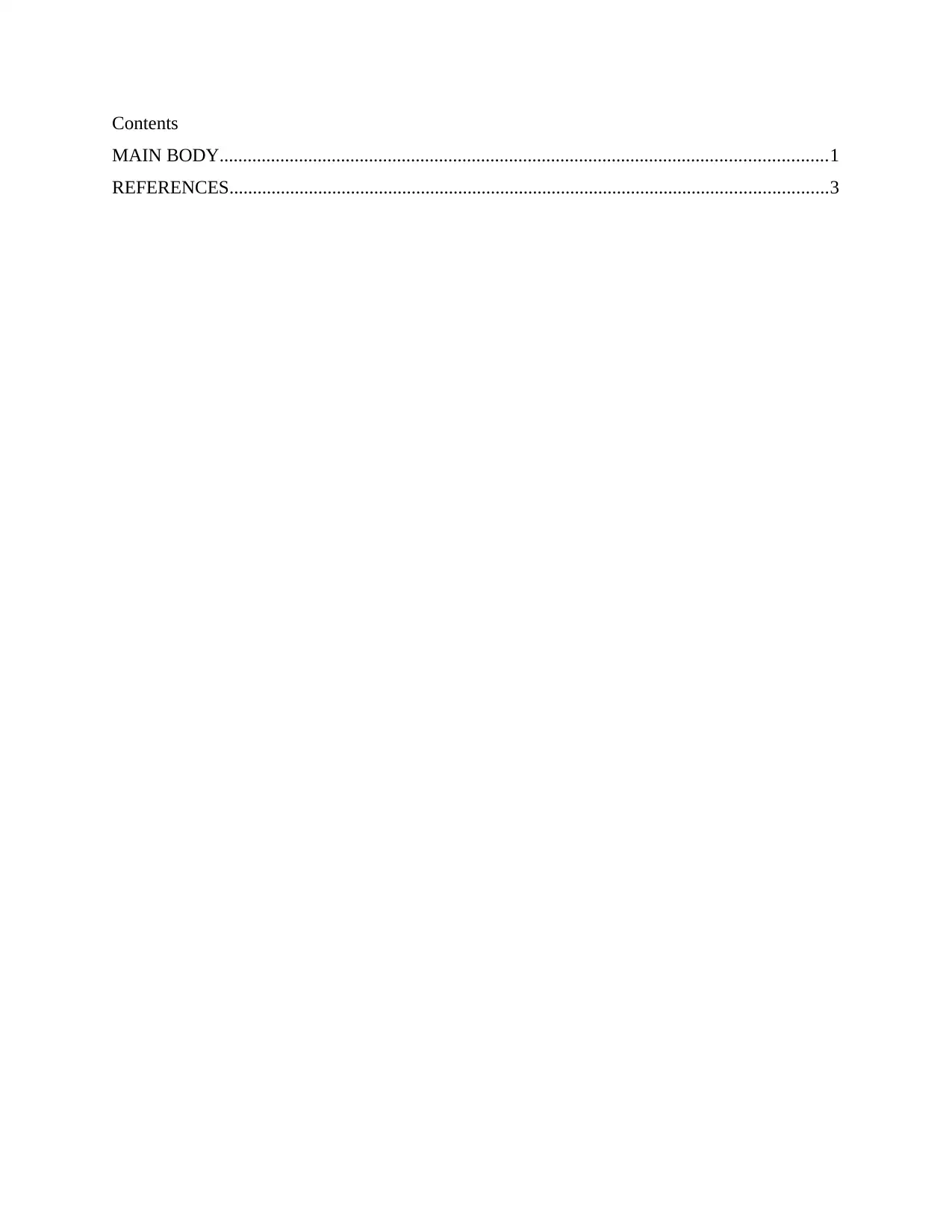
Contents
MAIN BODY..................................................................................................................................1
REFERENCES................................................................................................................................3
MAIN BODY..................................................................................................................................1
REFERENCES................................................................................................................................3
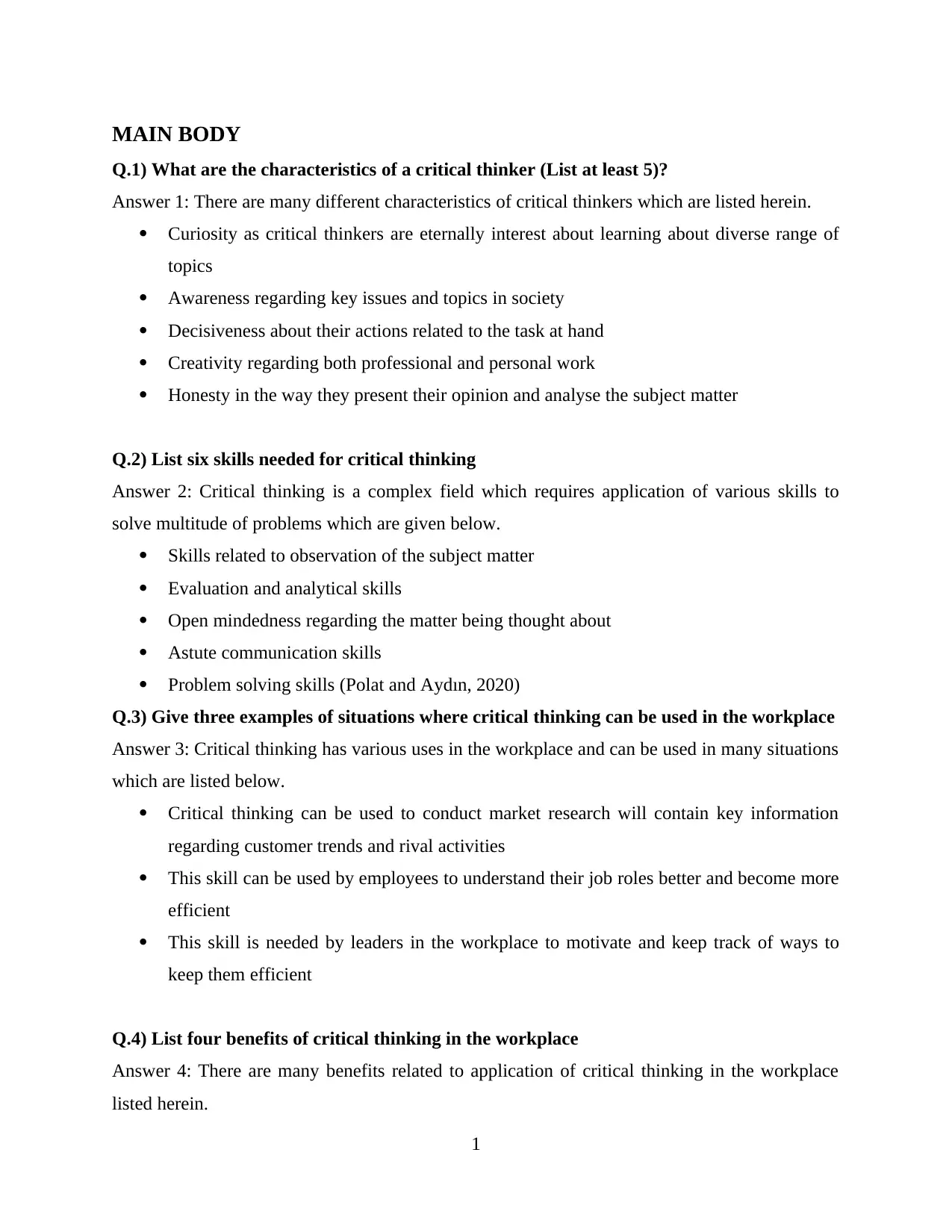
MAIN BODY
Q.1) What are the characteristics of a critical thinker (List at least 5)?
Answer 1: There are many different characteristics of critical thinkers which are listed herein.
Curiosity as critical thinkers are eternally interest about learning about diverse range of
topics
Awareness regarding key issues and topics in society
Decisiveness about their actions related to the task at hand
Creativity regarding both professional and personal work
Honesty in the way they present their opinion and analyse the subject matter
Q.2) List six skills needed for critical thinking
Answer 2: Critical thinking is a complex field which requires application of various skills to
solve multitude of problems which are given below.
Skills related to observation of the subject matter
Evaluation and analytical skills
Open mindedness regarding the matter being thought about
Astute communication skills
Problem solving skills (Polat and Aydın, 2020)
Q.3) Give three examples of situations where critical thinking can be used in the workplace
Answer 3: Critical thinking has various uses in the workplace and can be used in many situations
which are listed below.
Critical thinking can be used to conduct market research will contain key information
regarding customer trends and rival activities
This skill can be used by employees to understand their job roles better and become more
efficient
This skill is needed by leaders in the workplace to motivate and keep track of ways to
keep them efficient
Q.4) List four benefits of critical thinking in the workplace
Answer 4: There are many benefits related to application of critical thinking in the workplace
listed herein.
1
Q.1) What are the characteristics of a critical thinker (List at least 5)?
Answer 1: There are many different characteristics of critical thinkers which are listed herein.
Curiosity as critical thinkers are eternally interest about learning about diverse range of
topics
Awareness regarding key issues and topics in society
Decisiveness about their actions related to the task at hand
Creativity regarding both professional and personal work
Honesty in the way they present their opinion and analyse the subject matter
Q.2) List six skills needed for critical thinking
Answer 2: Critical thinking is a complex field which requires application of various skills to
solve multitude of problems which are given below.
Skills related to observation of the subject matter
Evaluation and analytical skills
Open mindedness regarding the matter being thought about
Astute communication skills
Problem solving skills (Polat and Aydın, 2020)
Q.3) Give three examples of situations where critical thinking can be used in the workplace
Answer 3: Critical thinking has various uses in the workplace and can be used in many situations
which are listed below.
Critical thinking can be used to conduct market research will contain key information
regarding customer trends and rival activities
This skill can be used by employees to understand their job roles better and become more
efficient
This skill is needed by leaders in the workplace to motivate and keep track of ways to
keep them efficient
Q.4) List four benefits of critical thinking in the workplace
Answer 4: There are many benefits related to application of critical thinking in the workplace
listed herein.
1
⊘ This is a preview!⊘
Do you want full access?
Subscribe today to unlock all pages.

Trusted by 1+ million students worldwide
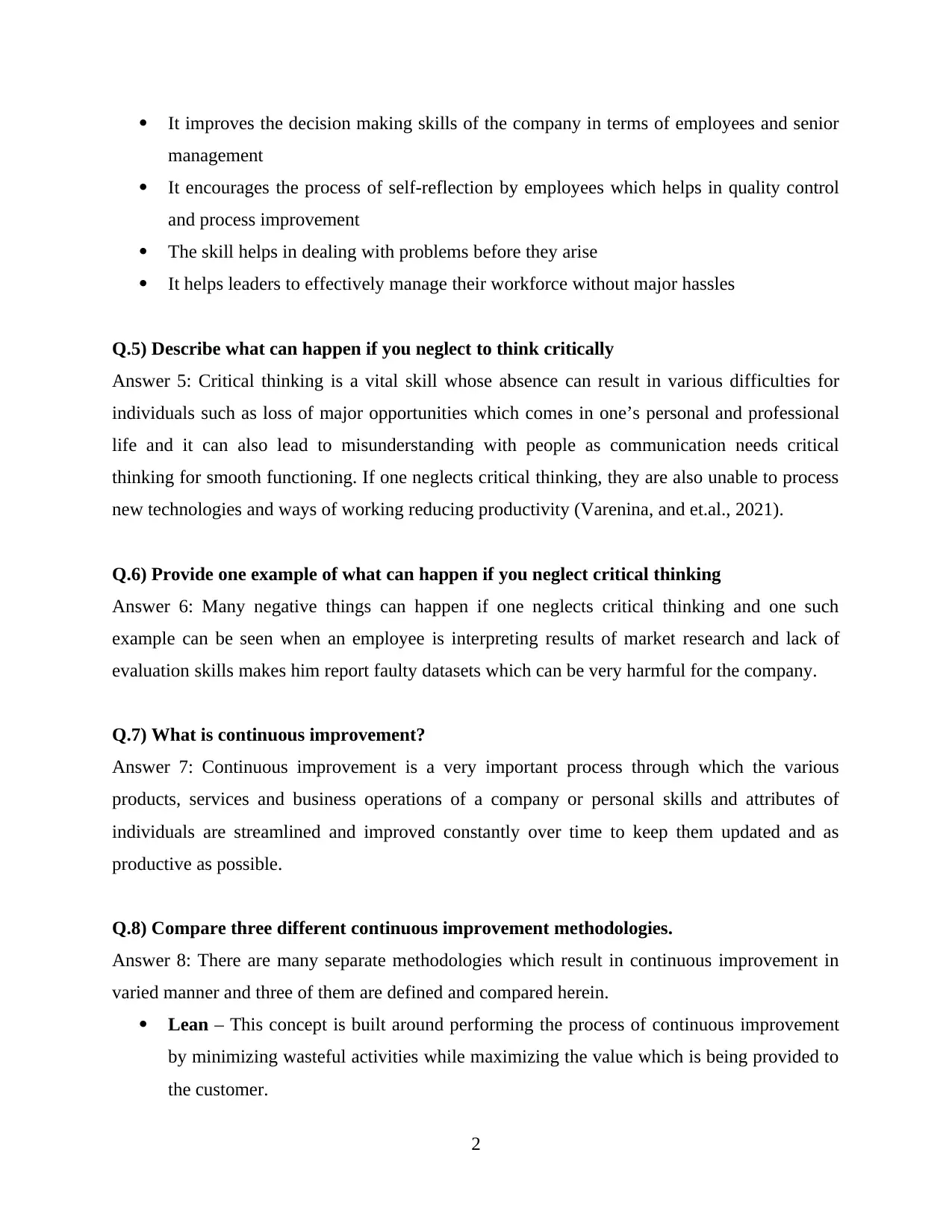
It improves the decision making skills of the company in terms of employees and senior
management
It encourages the process of self-reflection by employees which helps in quality control
and process improvement
The skill helps in dealing with problems before they arise
It helps leaders to effectively manage their workforce without major hassles
Q.5) Describe what can happen if you neglect to think critically
Answer 5: Critical thinking is a vital skill whose absence can result in various difficulties for
individuals such as loss of major opportunities which comes in one’s personal and professional
life and it can also lead to misunderstanding with people as communication needs critical
thinking for smooth functioning. If one neglects critical thinking, they are also unable to process
new technologies and ways of working reducing productivity (Varenina, and et.al., 2021).
Q.6) Provide one example of what can happen if you neglect critical thinking
Answer 6: Many negative things can happen if one neglects critical thinking and one such
example can be seen when an employee is interpreting results of market research and lack of
evaluation skills makes him report faulty datasets which can be very harmful for the company.
Q.7) What is continuous improvement?
Answer 7: Continuous improvement is a very important process through which the various
products, services and business operations of a company or personal skills and attributes of
individuals are streamlined and improved constantly over time to keep them updated and as
productive as possible.
Q.8) Compare three different continuous improvement methodologies.
Answer 8: There are many separate methodologies which result in continuous improvement in
varied manner and three of them are defined and compared herein.
Lean – This concept is built around performing the process of continuous improvement
by minimizing wasteful activities while maximizing the value which is being provided to
the customer.
2
management
It encourages the process of self-reflection by employees which helps in quality control
and process improvement
The skill helps in dealing with problems before they arise
It helps leaders to effectively manage their workforce without major hassles
Q.5) Describe what can happen if you neglect to think critically
Answer 5: Critical thinking is a vital skill whose absence can result in various difficulties for
individuals such as loss of major opportunities which comes in one’s personal and professional
life and it can also lead to misunderstanding with people as communication needs critical
thinking for smooth functioning. If one neglects critical thinking, they are also unable to process
new technologies and ways of working reducing productivity (Varenina, and et.al., 2021).
Q.6) Provide one example of what can happen if you neglect critical thinking
Answer 6: Many negative things can happen if one neglects critical thinking and one such
example can be seen when an employee is interpreting results of market research and lack of
evaluation skills makes him report faulty datasets which can be very harmful for the company.
Q.7) What is continuous improvement?
Answer 7: Continuous improvement is a very important process through which the various
products, services and business operations of a company or personal skills and attributes of
individuals are streamlined and improved constantly over time to keep them updated and as
productive as possible.
Q.8) Compare three different continuous improvement methodologies.
Answer 8: There are many separate methodologies which result in continuous improvement in
varied manner and three of them are defined and compared herein.
Lean – This concept is built around performing the process of continuous improvement
by minimizing wasteful activities while maximizing the value which is being provided to
the customer.
2
Paraphrase This Document
Need a fresh take? Get an instant paraphrase of this document with our AI Paraphraser
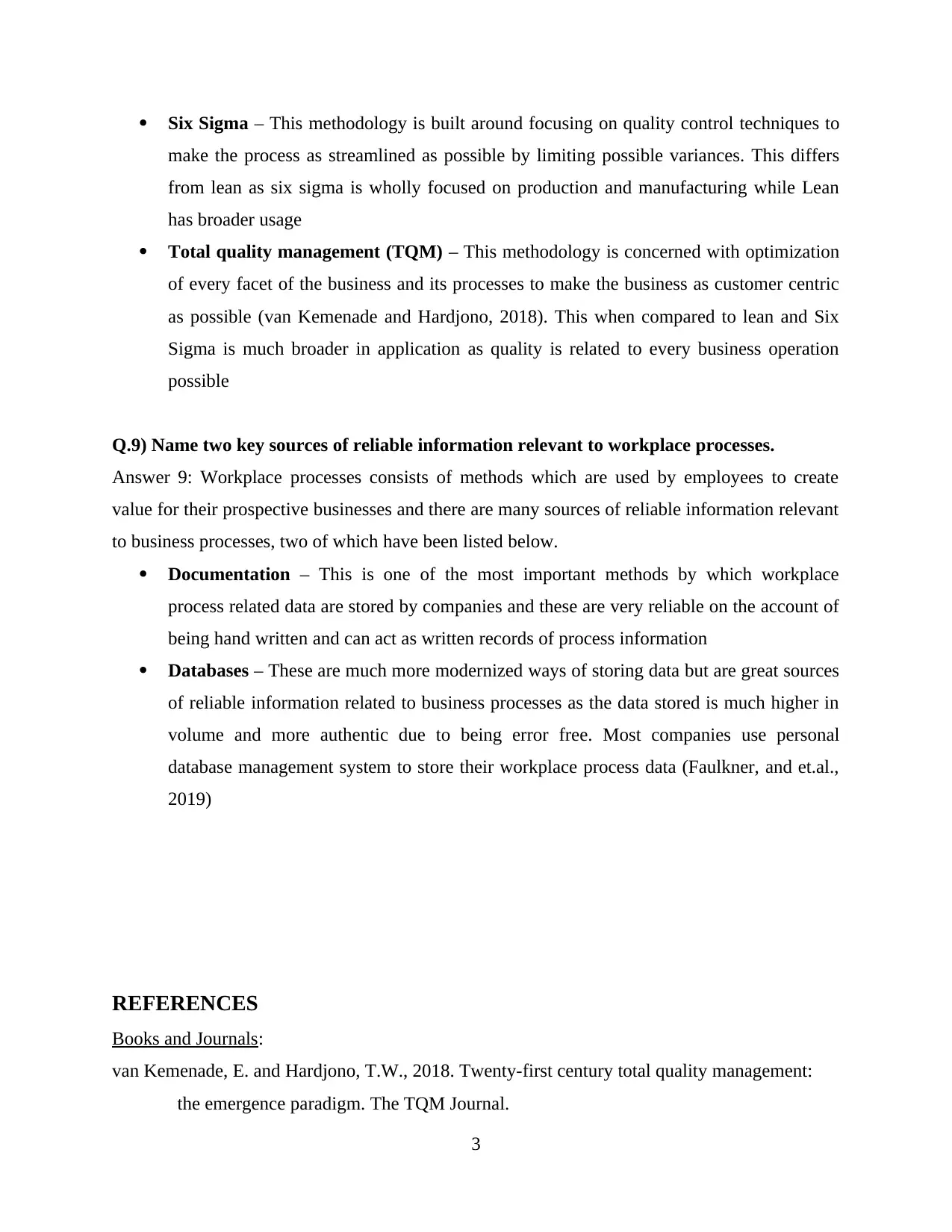
Six Sigma – This methodology is built around focusing on quality control techniques to
make the process as streamlined as possible by limiting possible variances. This differs
from lean as six sigma is wholly focused on production and manufacturing while Lean
has broader usage
Total quality management (TQM) – This methodology is concerned with optimization
of every facet of the business and its processes to make the business as customer centric
as possible (van Kemenade and Hardjono, 2018). This when compared to lean and Six
Sigma is much broader in application as quality is related to every business operation
possible
Q.9) Name two key sources of reliable information relevant to workplace processes.
Answer 9: Workplace processes consists of methods which are used by employees to create
value for their prospective businesses and there are many sources of reliable information relevant
to business processes, two of which have been listed below.
Documentation – This is one of the most important methods by which workplace
process related data are stored by companies and these are very reliable on the account of
being hand written and can act as written records of process information
Databases – These are much more modernized ways of storing data but are great sources
of reliable information related to business processes as the data stored is much higher in
volume and more authentic due to being error free. Most companies use personal
database management system to store their workplace process data (Faulkner, and et.al.,
2019)
REFERENCES
Books and Journals:
van Kemenade, E. and Hardjono, T.W., 2018. Twenty-first century total quality management:
the emergence paradigm. The TQM Journal.
3
make the process as streamlined as possible by limiting possible variances. This differs
from lean as six sigma is wholly focused on production and manufacturing while Lean
has broader usage
Total quality management (TQM) – This methodology is concerned with optimization
of every facet of the business and its processes to make the business as customer centric
as possible (van Kemenade and Hardjono, 2018). This when compared to lean and Six
Sigma is much broader in application as quality is related to every business operation
possible
Q.9) Name two key sources of reliable information relevant to workplace processes.
Answer 9: Workplace processes consists of methods which are used by employees to create
value for their prospective businesses and there are many sources of reliable information relevant
to business processes, two of which have been listed below.
Documentation – This is one of the most important methods by which workplace
process related data are stored by companies and these are very reliable on the account of
being hand written and can act as written records of process information
Databases – These are much more modernized ways of storing data but are great sources
of reliable information related to business processes as the data stored is much higher in
volume and more authentic due to being error free. Most companies use personal
database management system to store their workplace process data (Faulkner, and et.al.,
2019)
REFERENCES
Books and Journals:
van Kemenade, E. and Hardjono, T.W., 2018. Twenty-first century total quality management:
the emergence paradigm. The TQM Journal.
3
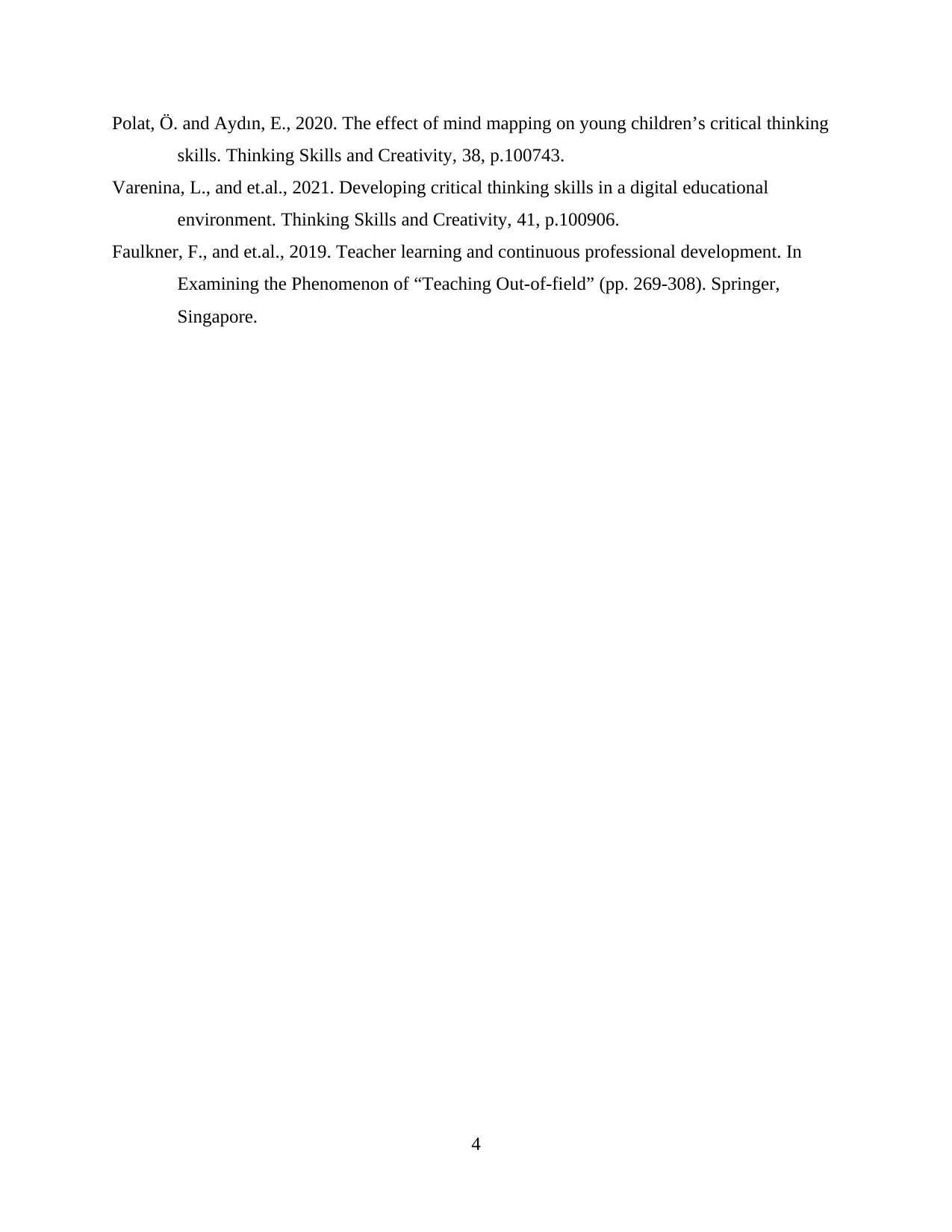
Polat, Ö. and Aydın, E., 2020. The effect of mind mapping on young children’s critical thinking
skills. Thinking Skills and Creativity, 38, p.100743.
Varenina, L., and et.al., 2021. Developing critical thinking skills in a digital educational
environment. Thinking Skills and Creativity, 41, p.100906.
Faulkner, F., and et.al., 2019. Teacher learning and continuous professional development. In
Examining the Phenomenon of “Teaching Out-of-field” (pp. 269-308). Springer,
Singapore.
4
skills. Thinking Skills and Creativity, 38, p.100743.
Varenina, L., and et.al., 2021. Developing critical thinking skills in a digital educational
environment. Thinking Skills and Creativity, 41, p.100906.
Faulkner, F., and et.al., 2019. Teacher learning and continuous professional development. In
Examining the Phenomenon of “Teaching Out-of-field” (pp. 269-308). Springer,
Singapore.
4
⊘ This is a preview!⊘
Do you want full access?
Subscribe today to unlock all pages.

Trusted by 1+ million students worldwide
1 out of 6
Related Documents
Your All-in-One AI-Powered Toolkit for Academic Success.
+13062052269
info@desklib.com
Available 24*7 on WhatsApp / Email
![[object Object]](/_next/static/media/star-bottom.7253800d.svg)
Unlock your academic potential
Copyright © 2020–2025 A2Z Services. All Rights Reserved. Developed and managed by ZUCOL.





